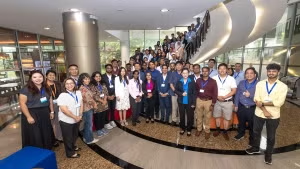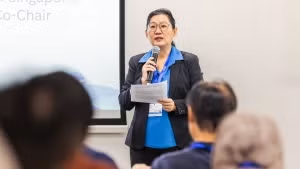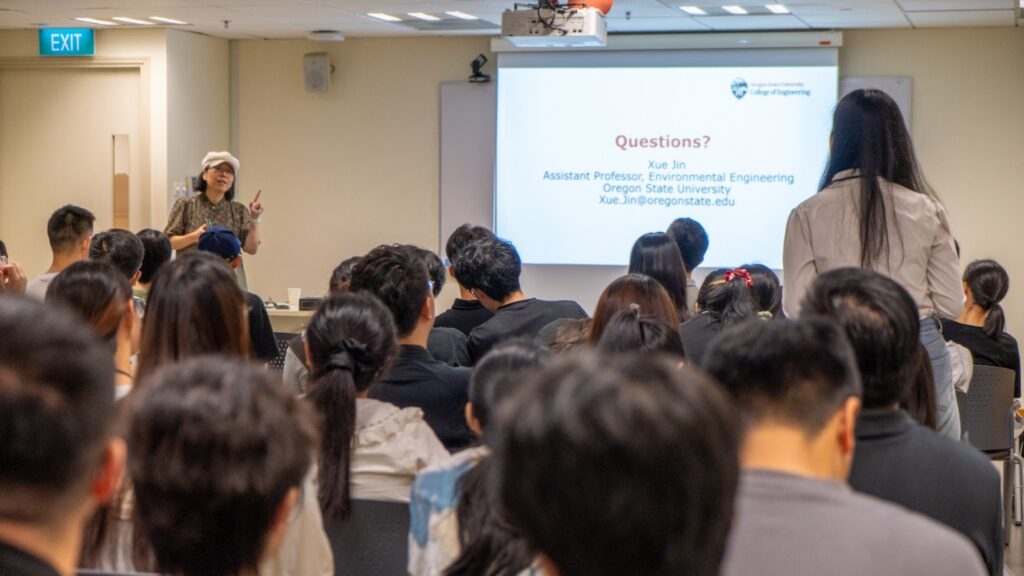Plastic is not just a convenience of everyday life. It has quietly become one of our greatest environmental challenges.
Among its insidious forms, microplastics (tiny plastic fragments less than 5 mm in size) are emerging as a pervasive pollutant, found not only in our rivers, oceans and soils but in the water we drink, the air we breathe and the food we eat. Their small size allows microplastics – and even smaller and potentially even more toxic nanoplastics – to circulate through ecological systems, entering food chains, and potentially impacting human health in ways that are only just becoming apparent.
Against this background, the Symposium on Microplastics in the Environment and Water: Challenges, Research, and Mitigation Strategies brought together scientists, policy-makers, and other stakeholders across the region to share research, debate standards and strategies, and explore collaborations to confront the growing impact of microplastic pollution.

Across the two days, the programme featured contributions from researchers from Malaysia, the Philippines, India, Japan, Korea, China, Italy and beyond, providing perspectives shaped by their own environmental contexts.
PhD student Thitiwut Maliwan of the Department of Civil and Environmental Engineering under Professor Jiangyong Hu examined household ultrafiltration membranes, widely marketed as the “last line of defence” in drinking water systems. Over a year of monitoring, he found that while these membranes can trap microplastics effectively (sometimes even improving in performance as biofilms formed), they also have the potential to release plastic fragments of their own, since the membranes are themselves made of polymers.
Using machine learning, he analysed the interplay of water quality, membrane condition and microplastic release. “We found that fouling, usually seen as a problem, can actually help capture microplastics more effectively, but the membranes themselves can still contribute plastics into the water,” he noted.

The symposium closed on a forward-looking note, recognising both the progress made and the scale of work still ahead.
“The research presentations we heard showed us how much progress has been made, but also how much more remains to be understood about microplastics, especially the smallest nanoplastics that we still struggle to detect,” said Professor Hu Jiangyong (Civil and Environmental Engineering), who led the organisation of the symposium as co-chair. “The diverse contributions from speakers across different countries gave us a fuller picture of the problem and the solutions being developed, from case studies and technical advances to policy frameworks.”
Reflecting on her takeaways from the symposium, Prof Hu said: “What excites me most is the potential for new collaborations that were sparked here, as we share methods, data and innovations across borders. At NUS and CDE, we are committed to continuing this work, from studying the impacts of microplastics on ecosystems and health to developing solutions in monitoring, removal, recycling and upcycling, and contributing to both local and global control of microplastic pollution.”
The Symposium on Microplastics in the Environment and Water was held from 18–19 September 2025 and jointly organised by the NUS Environmental Research Institute (NERI), the Centre for Water Research (CWR) at the Department of Civil and Environmental Engineering at CDE, and the SG Lab Forum as part of NUS Sustainability Connect 2025.




